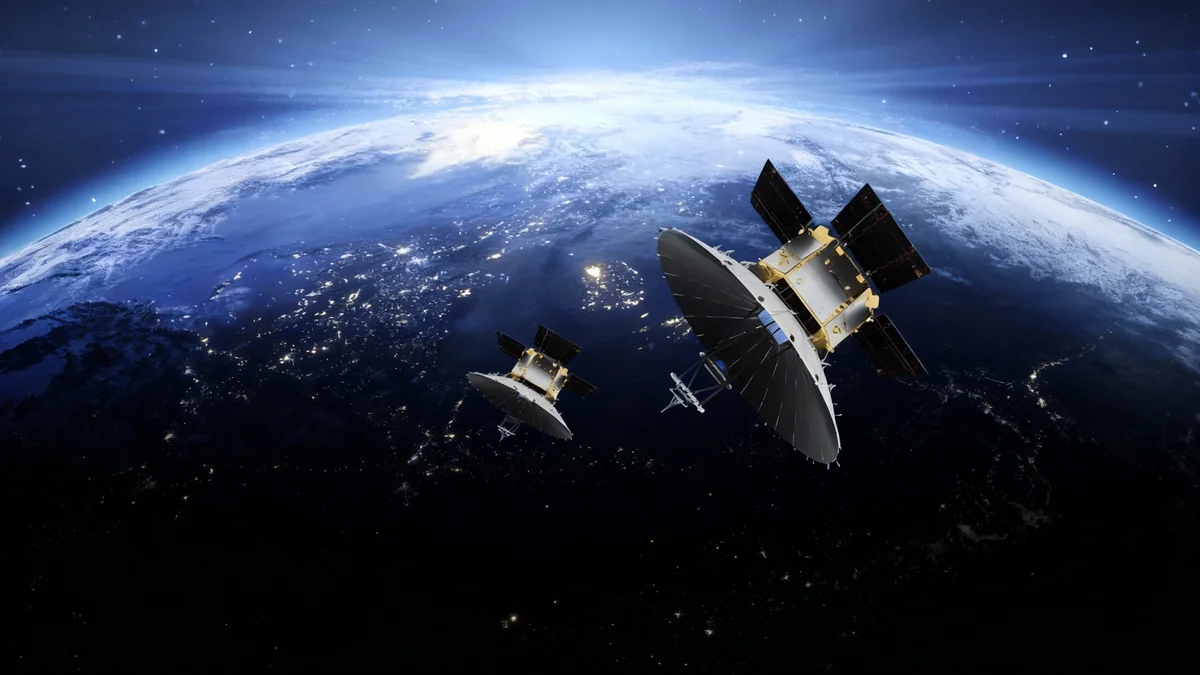The U.S. Space Force is funding a new project to develop an orbital platform capable of deploying smaller spacecraft while in orbit. Through its innovation arm, SpaceWERX, the military branch has awarded Seattle-based startup Gravitics a $60 million contract to create an "orbital carrier" designed to enable rapid responses to on-orbit threats.
Key Takeaways
- The U.S. Space Force, via SpaceWERX, has awarded a $60 million contract to the startup Gravitics.
- The project aims to develop an "orbital carrier," a space-based platform for launching smaller maneuverable vehicles.
- This system is designed to reduce response times to in-orbit threats from months to just hours.
- Potential missions include replacing damaged satellites, repairing assets, and countering electronic or physical attacks.
A New Concept for Space Operations
The United States military is exploring a significant shift in how it manages and defends its assets in space. The concept, known as an orbital carrier, moves away from the traditional model of launching every satellite from the ground. Instead, it involves a large, pre-positioned platform in orbit that serves as a mobile launchpad.
This initiative is being led by SpaceWERX, an organization within the Space Force structured to partner with private industry on advanced technology projects. The agency has selected Gravitics, a startup based in Seattle, Washington, to develop the technology under a Strategic Funding Increase program.
The orbital carrier is envisioned to function similarly to a naval aircraft carrier. It would host multiple smaller, maneuverable space vehicles that can be deployed on demand to various orbits. This approach eliminates the long lead times associated with scheduling and executing a conventional rocket launch from Earth.
What is SpaceWERX?
SpaceWERX is the innovation arm of the U.S. Space Force and a component of AFWERX, the broader innovation effort of the Department of the Air Force. Its mission is to connect the Space Force with innovative solutions from startups, small businesses, and academic institutions to accelerate the development of new space technologies.
Designed for Rapid Response
The primary advantage of the orbital carrier is speed. According to official statements, the platform is designed to enable the Space Force to address threats or system failures in orbit within hours, a stark contrast to the months it can take to prepare a ground-based launch.
In a previous statement, Gravitics CEO Colin Doughan explained the strategic value of the project.
“The Orbital Carrier is a game-changer, acting as a pre-positioned launch pad in space. It bypasses traditional launch constraints, enabling space vehicle operators to rapidly select a deployment orbit on-demand.”
This capability is critical for maintaining the functionality of essential satellite constellations, such as the Global Positioning System (GPS), which are vital for both military operations and civilian infrastructure. If a key satellite is damaged or disabled, the orbital carrier could quickly deploy a replacement or a repair vehicle.
The Need for Speed
While an orbital carrier promises a response time of hours, the current record for rapid ground launch is held by Firefly Aerospace. The company once launched a replacement satellite for the Space Force just 27 hours after receiving the order, demonstrating the high value placed on responsive space capabilities.
Countering Modern Space Threats
The development of the orbital carrier is a direct response to the evolving nature of military competition in space. U.S. military officials have repeatedly expressed concerns about the growing capabilities of nations like China and Russia to interfere with or attack American space assets.
Specific Dangers in Orbit
Military leaders have identified several types of potential threats that the orbital carrier system is intended to counter:
- Co-orbital Threats: So-called "killer satellites" that can maneuver close to other spacecraft to inspect, disable, or destroy them.
- Directed Energy Attacks: The use of ground-based or space-based lasers to "dazzle" or permanently blind the optical sensors on imaging and surveillance satellites.
- Electronic Warfare: Jamming of radiofrequency signals to disrupt communication and data transmission between satellites and ground stations.
- Cyber Attacks: Attempts to infiltrate and take control of a satellite's command systems, rendering it useless or turning it against its operators.
The orbital carrier would provide a flexible tool to address these issues. For instance, if a U.S. satellite were being targeted by a laser, a vehicle could be deployed from the carrier to block the beam or perform immediate diagnostics and repairs. If a satellite is damaged beyond repair, a replacement could be launched into its place almost immediately.
Challenges and Future Outlook
While the concept holds significant promise, the project faces considerable technical and financial challenges. The initial $60 million in funding is considered a starting point for a program that would ultimately require a much larger investment to become fully operational.
One of the main logistical hurdles is deployment. A platform as large as an orbital carrier cannot be launched fully assembled on any existing rocket. It would likely need to be constructed in a modular fashion, with different components launched separately and then assembled in orbit by astronauts or robotic systems.
Furthermore, operating such a complex system requires an extremely robust and secure command-and-control infrastructure. Ground controllers would need to maintain constant, reliable communication with the carrier to manage its systems and deploy its vehicles at a moment's notice, all while protecting it from potential cyber threats.
Despite these obstacles, the orbital carrier project represents a forward-looking step by the Space Force to maintain its strategic advantage. If successful, it could fundamentally alter the dynamics of space defense, providing the United States with a level of resilience and responsiveness that is currently unattainable.





